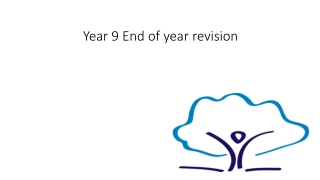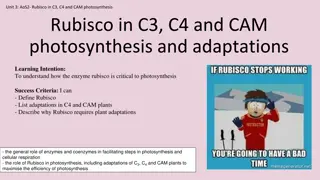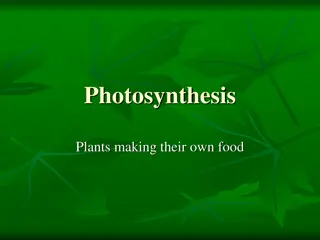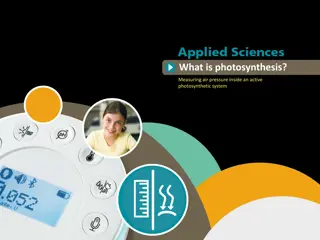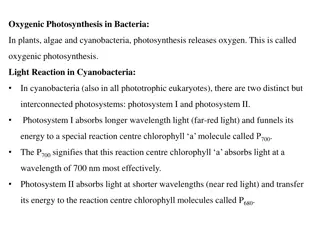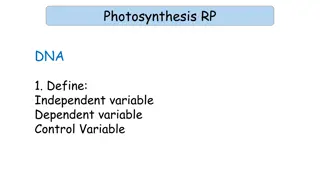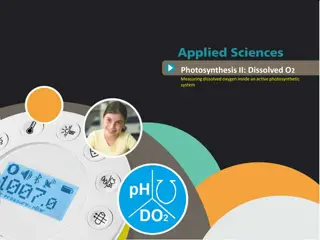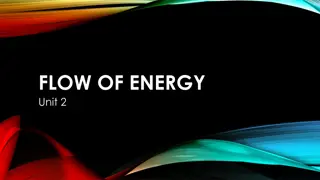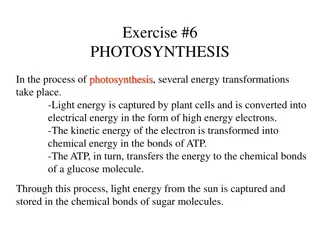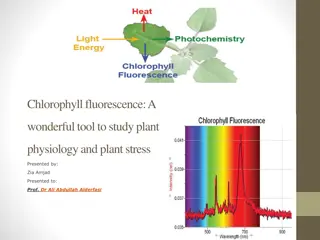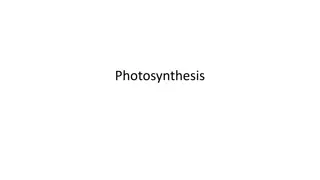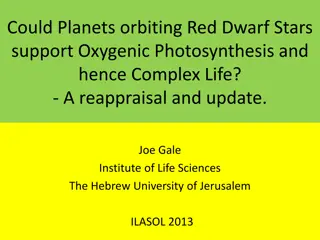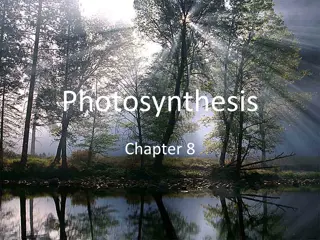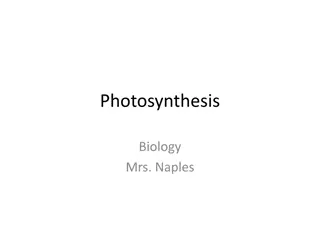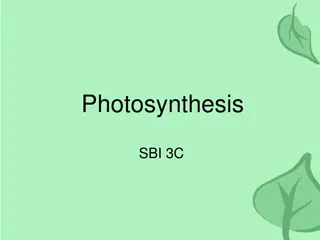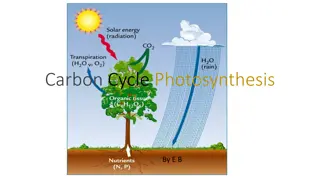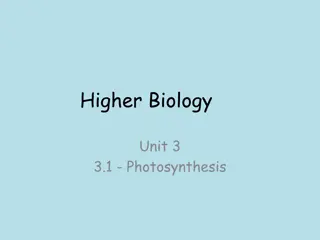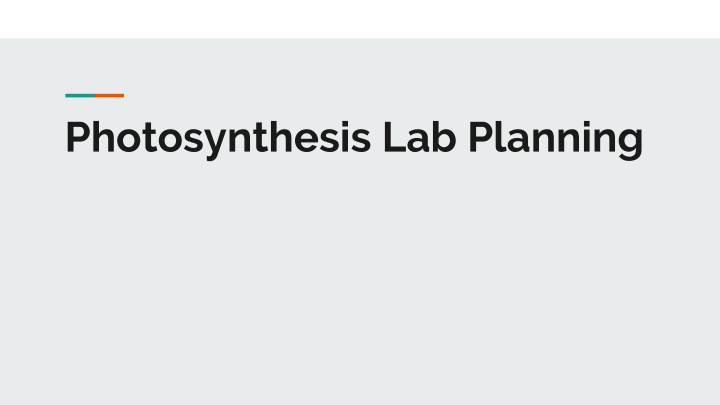
Photosynthesis Lab Planning and Study Variables
This plan outlines a photosynthesis lab focusing on spinach as the organism of study. It delves into the impact of added reactants and changes in light energy on the food obtaining process. The research question, variables, hypothesis, predictions, and experimental procedures are detailed to ensure a controlled experiment. Academic sources are cited in MLA format for background research.
Download Presentation

Please find below an Image/Link to download the presentation.
The content on the website is provided AS IS for your information and personal use only. It may not be sold, licensed, or shared on other websites without obtaining consent from the author. If you encounter any issues during the download, it is possible that the publisher has removed the file from their server.
You are allowed to download the files provided on this website for personal or commercial use, subject to the condition that they are used lawfully. All files are the property of their respective owners.
The content on the website is provided AS IS for your information and personal use only. It may not be sold, licensed, or shared on other websites without obtaining consent from the author.
E N D
Presentation Transcript
Background research 1. Using academic sources, research the following. a. Describe the organism you are studying. i. Spinach (Spinacia oleracea) b. What process does this organism use to obtain food? c. What impact do added reactants have on this process? d. What impact do changes in light energy have on this process?
Sources 2. Cite, in MLA format, the references you used for question one. Example MLA source: Hofeld, Jennifer Ferguson. "Using Modeling to Develop a Deep Understanding of Photosynthesis & Cellular Respiration as Chemical Processes." The American Biology Teacher 83, 6, 2021, pp. 382-386. Author Last Name, First Name. Title of Article. Title of Journal Volume, Number, Date, Page Number. If you are unsure of how to cite a source, Purdue OWL (online writing lab) is an excellent resource.
Question 3. What is the research question you plan to investigate? 4. What observations or information led you to your research question?
Study variables 5. What is your independent variable? The independent variable is the manipulated variable, what you will change among your study groups. 6. What is your dependent variable? The dependent variable is the responding variable, what you expect to differ based on the independent variable. This is what you will measure or count. You may have more than one dependent variable. 7. What will you hold constant across all groups to ensure a controlled experiment?
Hypothesis 8. What is your hypothesis? Based on what you already know, what do you think will be the answer to your research question? 9. What are your predictions? a. If my hypothesis is supported then I predict. . . b. If my hypothesis is not supported then I predict. . . 10.What will be the evidence that supports your hypothesis?
Methods 11. What are your experimental procedures? Refer to the Leaf Disk Flotation Methods handout to help you answer these questions. a. b. c. d. e. What is your control group? How will you treat your experimental group(s)? What tools will you use to collect your data? Why will you use those tools to collect your data? How often and for how long will you collect your data?

